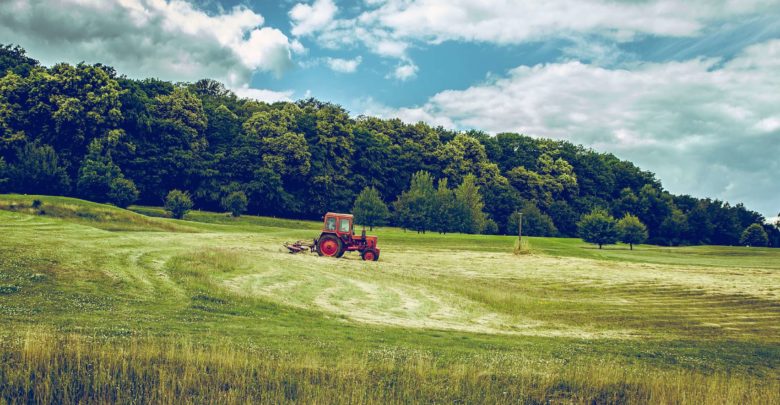Trade
Blockchain technology to modernise agricultural trade practices

Agricultural profitability has been almost halved since the 1980s, to the chagrin of many farmers and ranchers. In the ’80s, the average farmer made approximately $0.31 cents on the dollar. Today, farmers earn about $0.16 cents on each dollar. Considering technological advancements that have led to increased productivity across various agricultural sectors, such as in farm equipment, fertiliser, breeding, and disease control, one would assume that farm profitability should be trending upwards. However, that is not the case, because the trade of agricultural produce has stagnated significantly as the industry remains mostly non-digital. Paper records and verbal agreements are still very much standard practice between farmers and their corporate partners.
Antiquated practices mean lost capital
For farmers and ranchers to track customer interactions and transactions using software like Excel is a step ahead of simply relying on a paper trail, but it does not go far enough to modernize the transactional side of trade in the industry. The exchange of endless documentation between agriculturalists and their clientele, financial institutions, as well as with third parties, can quickly become hectic, disorganized, and a massive headache for the average farmer.
As a result, vast amounts of time and capital are lost between third parties and intermediaries. The simple authentication of documents can become a massively time-consuming process, which in many ways has become a sector of its own, consequently outsourced to law firms or consulting firms to get to the end of a paper trail effectively.
In the agricultural industry, developing a blockchain ecosystem has been suggested with some degree of optimism, as a digital trade ecosystem could efficiently facilitate trade between farmers and ranchers and their clientele, financial institutions, and third-party intermediaries and contractors.
If properly developed and given enough support, blockchain technology could resolve issues of decreasing trust and bureaucratic chaos that are hindering trade in the agricultural industry. Through the reduction of transaction costs, higher levels of financial security, and just generally more transparency in the supply chain, digitization of agrarian trade practices could revive some capital lost to intermediaries and third parties, while also restoring trust between industry stakeholders.
Blockchain has already been employed in the meat industry
An example of blockchain technology being incorporated into the agricultural sector already exists, as last week a blockchain-based platform was introduced in the southeastern United States to increase the transparency of the supply chain in the beef industry. Such a move could draw attention from meat industries elsewhere, as there has been some skepticism among average customers over the transparency of the supply chain between the ranch and the grocery store, with many people concerned that they are not receiving meat as advertised.
Blockchain technology as a food safety mechanism?
In the UK, earlier this month, the Food Standards Agency (FSA) completed a pilot project where blockchain technology was used as a regulatory tool in food production. Very few details were released that would shed light on the project, but since the FSA exists to ensure food safety, we can wager that blockchain technology may have been used to track food producers’ compliance with hygiene and safety standards.
Blockchain technology may begin to play a more significant role in the agricultural industry if projects like the one in the UK are seen to increase efficiency. It will be an exciting sector to watch over the coming months.
Image by : Emiel Molenaar




I was recommended this web site by way of my cousin. I am no longer sure whether this publish is written through him as no one else realize such distinct about my problem. You’re wonderful! Thank you!
Very interesting information!Perfect just what I was looking for!
I have learn some excellent stuff here. Definitely worth bookmarking for revisiting. I surprise how a lot attempt you put to make the sort of wonderful informative site.
When I initially commented I clicked the “Notify me when new comments are added” checkbox and now each time a comment is added I get three e-mails with the same comment. Is there any way you can remove me from that service? Many thanks!
Hey there! Quick question that’s completely off topic. Do you know how to make your site mobile friendly? My website looks weird when browsing from my apple iphone. I’m trying to find a template or plugin that might be able to fix this problem. If you have any recommendations, please share. With thanks!
brand azithromycin azithromycin cost purchase gabapentin pills
of course like your web site but you need to check the spelling on several of your posts. Several of them are rife with spelling issues and I find it very troublesome to tell the truth nevertheless I will surely come back again.
Thanks for expressing your ideas listed here. The other thing is that when a problem takes place with a computer system motherboard, people today should not go ahead and take risk connected with repairing this themselves for if it is not done correctly it can lead to irreparable damage to the entire laptop. In most cases, it is safe to approach your dealer of any laptop for the repair of the motherboard. They have technicians who may have an knowledge in dealing with mobile computer motherboard issues and can carry out the right analysis and perform repairs.
Hi there! Do you use Twitter? I’d like to follow you if that would be ok. I’m undoubtedly enjoying your blog and look forward to new posts.
But a smiling visitant here to share the love (:, btw outstanding layout.